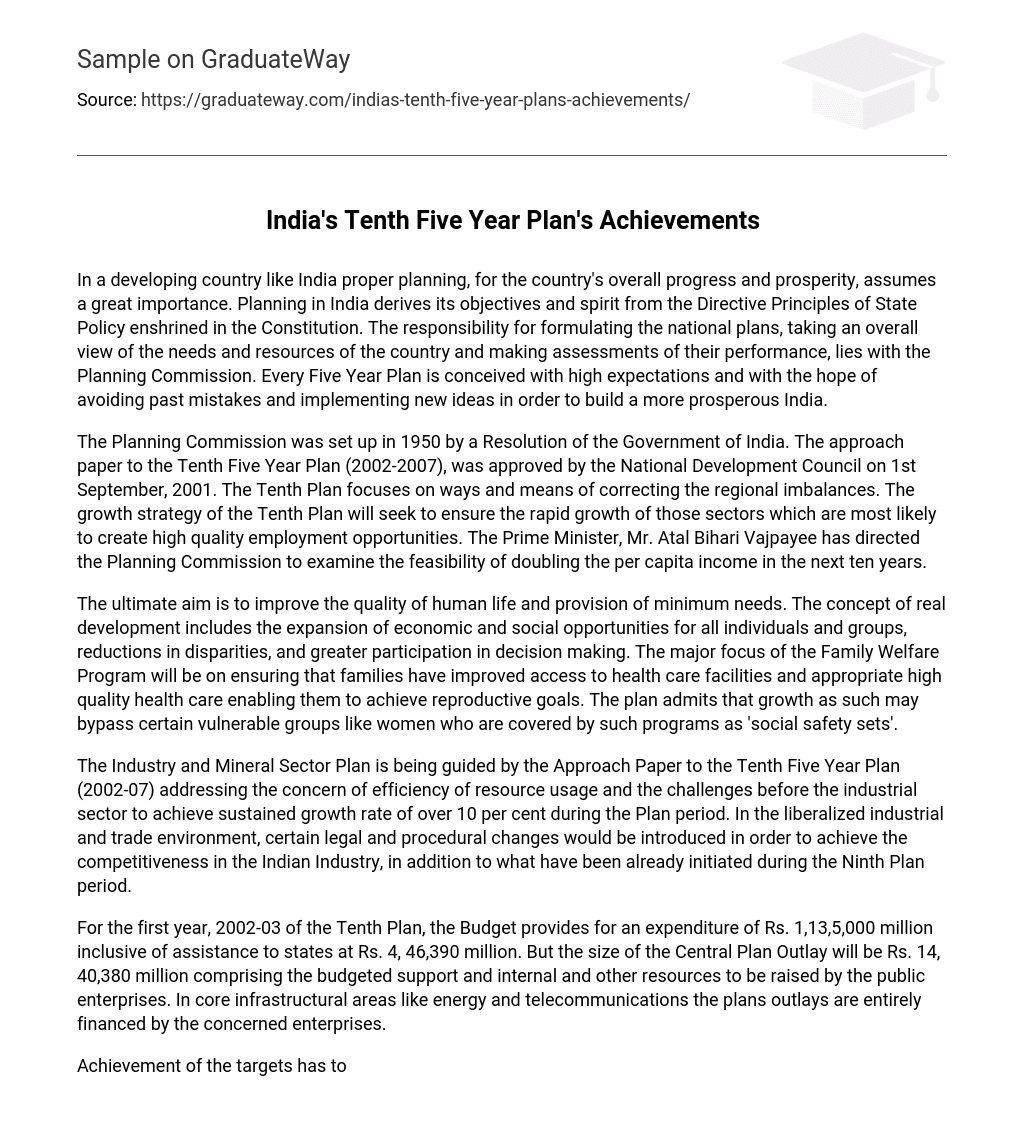In a developing country like India proper planning, for the country’s overall progress and prosperity, assumes a great importance. Planning in India derives its objectives and spirit from the Directive Principles of State Policy enshrined in the Constitution. The responsibility for formulating the national plans, taking an overall view of the needs and resources of the country and making assessments of their performance, lies with the Planning Commission. Every Five Year Plan is conceived with high expectations and with the hope of avoiding past mistakes and implementing new ideas in order to build a more prosperous India.
The Planning Commission was set up in 1950 by a Resolution of the Government of India. The approach paper to the Tenth Five Year Plan (2002-2007), was approved by the National Development Council on 1st September, 2001. The Tenth Plan focuses on ways and means of correcting the regional imbalances. The growth strategy of the Tenth Plan will seek to ensure the rapid growth of those sectors which are most likely to create high quality employment opportunities. The Prime Minister, Mr. Atal Bihari Vajpayee has directed the Planning Commission to examine the feasibility of doubling the per capita income in the next ten years.
The ultimate aim is to improve the quality of human life and provision of minimum needs. The concept of real development includes the expansion of economic and social opportunities for all individuals and groups, reductions in disparities, and greater participation in decision making. The major focus of the Family Welfare Program will be on ensuring that families have improved access to health care facilities and appropriate high quality health care enabling them to achieve reproductive goals. The plan admits that growth as such may bypass certain vulnerable groups like women who are covered by such programs as ‘social safety sets’.
The Industry and Mineral Sector Plan is being guided by the Approach Paper to the Tenth Five Year Plan (2002-07) addressing the concern of efficiency of resource usage and the challenges before the industrial sector to achieve sustained growth rate of over 10 per cent during the Plan period. In the liberalized industrial and trade environment, certain legal and procedural changes would be introduced in order to achieve the competitiveness in the Indian Industry, in addition to what have been already initiated during the Ninth Plan period.
For the first year, 2002-03 of the Tenth Plan, the Budget provides for an expenditure of Rs. 1,13,5,000 million inclusive of assistance to states at Rs. 4, 46,390 million. But the size of the Central Plan Outlay will be Rs. 14, 40,380 million comprising the budgeted support and internal and other resources to be raised by the public enterprises. In core infrastructural areas like energy and telecommunications the plans outlays are entirely financed by the concerned enterprises.
Achievement of the targets has to be coupled with high growth rate. Planning has to go beyond providing mere budgetary allocations between competing sectors and regions. It has to address with greater vigor the need to release latent energies and stimulate private initiatives in various facets of our development process. Ultimately we have to plan for an environment that will provide ample opportunities for all to actualize their potential individually and also collectively for the nation as a whole.





